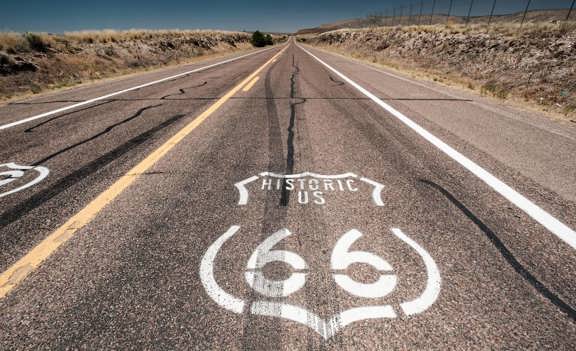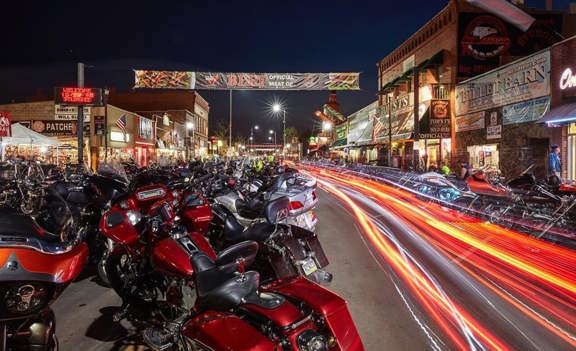
Traveling in an RV is all about freedom — hitting the open road to explore wonders off the beaten path. And what’s one way to truly take the road less traveled? Two words — RV boondocking.
Boondocking is camping without all the amenities, and it can be a cost-effective and fun way to travel in an RV. Sure, it’s a little intimidating at first, but with this guide, you can choose the best RV for boondocking and confidently hit the road.
What is Boondocking?
Boondocking in an RV is self-sufficient camping, meaning having no access to water, sewer, or electrical hookups. This can mean parking your rig in the backcountry or pulling over to spend the night at a rest stop or parking lot.
Traditionally, boondocking is as close to dispersed camping or wild camping as you can get with an RV. Also known as dry camping, boondocking is all about self sufficency, experiencing life off grid, and detaching from the "rat race." Another key component that goes along with boondocking is the money saving aspect. This is due to camping locations often being free or extremely low cost. Boondockers try to park in remote areas of public lands like national forests or Bureau of Land Management (BLM) zones.
If you’re considering an extended road trip, boondocking is a great way to save some money and allows for more freedom in your route planning. You won’t need to make reservations, and you can go nearly anywhere.
Is RV Boondocking Even Legal?
While setting up camp in the middle of nowhere (or in the middle of a city) might feel suspect, it’s actually encouraged by state and local governments. Those who are willing to go without amenities reduce overcrowding at RV parks and developed campgrounds. Thankfully, there are several places to spend the night without paying a dime. We’ll cover how to boondock in an RV and where you can stay below.
Is It Safe To Go RV Boondocking?
Just like any other camping trip, safety is a key factor to consider. Since many of the locations you’ll find yourself setting up camp don’t often have someone regularly overseeing them (and spotty cell service), you may be wondering just how safe it is to boondock in an RV. Boondocking in your RV is just as safe as tent camping, if not more. With the option to lock your door at night, you’ll have added protection during this camping experience.
How To Boondock in an RV
As you prepare for your RV boondocking adventure, there are a few steps you can take to ensure a smooth trip!
1. Choose a Time and Location
The first step is to decide when and where you’re going! This will determine the type of supplies you need, where you’ll pick up your RV, and what activities you’ll have access to during your trip. We’ll cover the best locations for boondocking in your RV in the next section.
2. Check the Weather
As you narrow down your time and location, keep an eye on the weather map. Inclement weather may hinder your camping experience and cause safety issues during your stay. If you notice the potential for dangerous weather, you may want to choose a new location or postpone your trip.
3. Rent a Quality RV
After you’ve selected your location, you can search for nearby RV rental locations. Cruise America offers pick-up and drop-off locations across the U.S. Our quality RV rentals are a top choice for a boondocking trip anywhere in the country. Find our nearest location to your trip and make traveling easy!
4. Stock Up On Supplies
Once you’ve picked up your RV, it’s time to stock it with all the supplies you’ll need. Create a checklist full of extra batteries, plenty of food, layers for every weather, and more. Check and double-check your list to make sure you have the essentials. We’ll outline the absolute must-haves you need for your RV boondocking trip later on.
5. Complete Final Checks
Just before you pile in the RV and head out onto the open road, complete final checks. Make sure your tank is full, your batteries are fully charged, and you have everything you need. The last thing you want is to set up camp and realize you forget essential supplies.
6. Hit the Road!
And with that, it’s time for your adventure! Cruise down the road in your RV rental and make all new memories as you boondock in your RV.
The Pros and Cons of Dispersed Camping
Pros
-
Total Freedom and Stunning Locations
-
Boondocking gives RV travelers the freedom to camp far beyond the crowded campgrounds. Whether you’re parking along a quiet forest service road in Colorado, overlooking a red-rock canyon in Utah, or beside a remote desert wash in Arizona, you get million-dollar views for free. There are no check-in lines, no assigned spaces, and no noise from generators running next door—just open sky and the sounds of nature.
-
Serious Cost Savings
-
Most boondocking sites are free or cost only a few dollars per night, compared to $40–$100 for many private campgrounds. For long-term travelers or families on extended road trips, that can mean saving thousands of dollars each year. You’ll also cut down on dining expenses by using your RV’s kitchen for meals instead of relying on restaurants along the way.
-
Peace, Privacy, and a True Connection to Nature
-
In today’s world of crowded tourist spots, boondocking gives you the space to unwind. You can enjoy morning coffee with no one else around, hear coyotes calling during overnight camping, or stargaze without the glow of city lights. The slower pace and immersion in nature make it easy to reset your mind and body after busy weeks of travel or work.
-
Adventure and Self-Reliance
-
Every boondocking trip is a lesson in independence. You learn how to conserve water, manage power through solar or battery systems, and plan routes based on your RV’s needs. For adventurous travelers, this challenge is part of the fun—it builds confidence and adds an element of discovery to every journey.
Cons
-
Limited Amenities and Utilities
-
Boondocking means there are no electrical hookups, water spigots, or sewer connections. You’ll depend entirely on your RV’s internal systems, so it’s essential to monitor your water, battery, and propane levels. While modern RVs can handle days off-grid, you’ll need to plan ahead—especially if traveling with family or kids.
-
Accessibility Challenges
-
Many of the most beautiful boondocking sites require driving on unpaved or uneven terrain. Large Class C RVs can sometimes struggle with tight turns or low clearances, so it’s wise to scout the road ahead or use tools like Campendium and iOverlander for verified site information.
-
No On-Site Facilities
-
Forget hot showers, laundry rooms, or Wi-Fi. If you’re used to resort-style amenities, boondocking may feel bare-bones. Travelers often rely on solar panels, power banks, or public facilities between stops. It’s a rewarding experience—but not always a convenient one.
-
Rules and Responsibility
-
Boondocking is a privilege, not a right. Many public lands allow dispersed camping for 14 days before requiring you to move, and you must follow Leave No Trace principles—pack out trash, avoid creating new fire rings, and respect local wildlife. Irresponsible campers risk losing access for everyone.
Where to Go RV Boondocking (and How to Find the Best Spots)
Before you hit the open road, it’s worth planning where you’ll set up camp for your off-grid getaway. One of the best parts about boondocking is that you’re not tied to crowded campgrounds or expensive RV resorts—you get to choose your own backdrop. Whether you’re looking for total solitude or a quick overnight parking spot on a long drive, here are a few of the most common places to find boondocking locations across the U.S.
1. Public Lands: National and State Parks, Forests, and BLM Areas
If you’re after wide-open views and access to nature, national and state parks, national forests, and Bureau of Land Management (BLM) lands are prime boondocking territory. Many of these areas allow designated dispersed camping—which means you can park and stay outside of developed campgrounds as long as you follow local rules.
When exploring these areas:
-
Look for existing pullouts or clearings rather than creating new tracks.
-
Follow posted regulations, as some parks limit camping to certain distances from roads or water sources.
-
Always check road conditions before venturing deep into forest or desert terrain—some dirt roads can become impassable after rain or snow.
-
You can usually stay up to 14 days in one area before moving on to a new site.
Apps like Campendium, FreeRoam, and iOverlander can help you pinpoint free boondocking spots and read reviews from other RVers.
2. Overnight Parking at Businesses and Rest Stops
If you’re taking a cross-country road trip or need a place to rest between destinations, some large retailers and truck stops still offer overnight parking for RV travelers. Chains like Walmart, Cracker Barrel, Cabela’s, and Camping World are well-known for welcoming RVs—though permission varies by location.
Before setting up for the night:
-
Always ask the store manager if overnight parking is allowed, as some cities and states have restrictions.
-
Park away from main entrances to respect regular customers.
-
Be courteous—keep noise down, avoid extending slide-outs, and consider making a small purchase to support the business.
This option is best for short stays or travel days when you just need a safe, convenient place to sleep before continuing your journey.
3. Private Property and Rural Landowners
If you have friends or family who live in rural areas, ask if you can park your RV on their land—it’s one of the easiest forms of private property boondocking. For those without personal connections, websites like Harvest Hosts and Boondockers Welcome connect travelers with local hosts who allow short stays on farms, vineyards, and ranches across the country.
This setup gives you the safety of a private space while still enjoying a rustic, off-grid feel. You’ll also have the chance to meet new people and support small businesses in the process.
4. Designated Campgrounds with No Hookups
Even if your goal is to camp off-grid, you can still get a taste of boondocking at established campgrounds that offer designated dispersed camping areas or no-hookup sites. These spots provide more convenience—such as bathrooms, potable water, or dump stations—while keeping your setup simple and affordable.
They’re ideal for first-time boondockers who want to learn how to conserve resources and manage power before heading completely off the grid.
How Long Can You Boondock in an RV?
You know where to go and what to do, but how long can you boondock in an RV? Some national forests and BLM areas allow boondockers to stay up to 14 days. Others will place a limit to typically under a week. Designated campsites and parking lots will likely have stricter guidelines about how long you can stay. Wherever you choose, you’ll want to verify how long you can boondock in your RV and plan accordingly.
Keep in mind that this timeline is based on how prepared you are. If you come equipped with extra batteries and enough supplies, a 14-day trip may be feasible. We’ll cover the essential RV boondocking supplies that you’ll want to add to your packing list below.
Essential Supplies for Free Camping
Simplicity is the name of the game when RV boondocking, but there are a few important items that will make your trip a lot more comfortable and safe.
-
Water Jugs: H2O is in short supply when you’re camping outside the RV parks. While you can go a few days without a shower or washing dishes, it’s always a good idea to keep a jug or two of drinking water.
-
12v Fans: Without electrical hookups, you won’t be using your RV’s air conditioner. However, you can keep cool with a couple of 12v fans that run off the same batteries as your RV’s lighting system.
-
Propane Space Heater: If you thought boondocking was only for the summertime, think again! Cold weather boondocking can be great fun, but using your RV’s heater will quickly drain the tanks. Using a small space heater keeps specific areas warm without burning through so much fuel.
-
Composting Toilet: RV toilets are a resource hog. When boondocking for several days, the water tank runs dry, and the sewage tank fills up. A composting toilet will keep your waste sanitary and scent-free.
-
First Aid Kit: Boondocking can take your RV rental into remote territory, which means you might be far from medical attention. A simple kit filled with a variety of bandages, sterilizing solutions, and a few tools, like tweezers and scissors, should be more than enough.
-
Power Banks: You might be going off the grid hookup-wise, but you’ll still want to make use of your phone, e-reader, or handheld gaming system. A power bank with enough capacity for several charging cycles should keep all your electronics up and running.
-
Cell Signal Booster: This one’s a necessity if you’re camping far from civilization. Having a couple of extra bars can be a lifesaver should there be an emergency.
Stock up on these items and do a final walk-through of your RV before you begin your road trip!
Adventuring in a Cruise America RV
Some of the best boondocking RVs are at Cruise America; our RV rentals come in a variety of styles with the amenities you need for a successful trip. Our rental process is simple, and you can tailor it to fit your trip’s needs, whether it be a simple weekend trip or a long-term excursion.
Book an RV and enjoy dispersed camping -- it's an experience you won't regret!





